Looking for a few tips and tricks for how to care for your Christmas cactus this holiday season – and get it to bloom bigger, better and longer than ever?
The Christmas cactus is one of the most popular indoor plants of all during the holidays – and for good reason as it happens to be one of the only houseplants that bloom big, bright and profusely all through the season.
With varieties that flower in deep, vibrant shades of red, pink, orange and white, they truly are the perfect plant to help decorate in style. And, even more, thanks to their ability to bloom and produce flowers for up to six weeks, they give you plenty of time to enjoy their beauty.
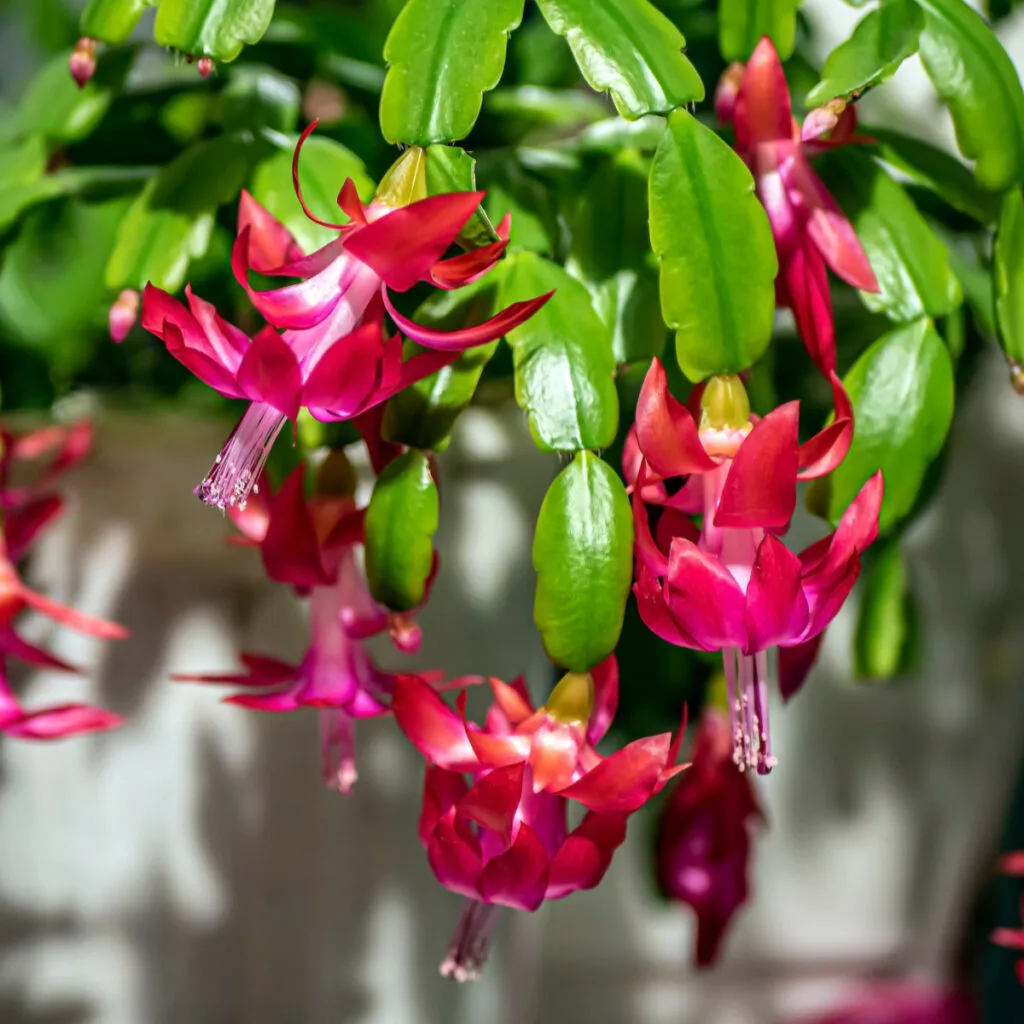
If all of that flower power wasn’t enough, with a little extra attention, many can even bloom a second time in late winter or early spring. Talk about a houseplant that can brighten up the long, dark days of winter in style!
Getting The Most From Your Christmas Cactus – How To Care For A Christmas Cactus
But whether you purchased your first Christmas cactus this year, or have been growing one for many years – getting those all important blooms to flower with gusto can often be a challenge for many gardeners. As can keeping them healthy and strong after they bloom too!
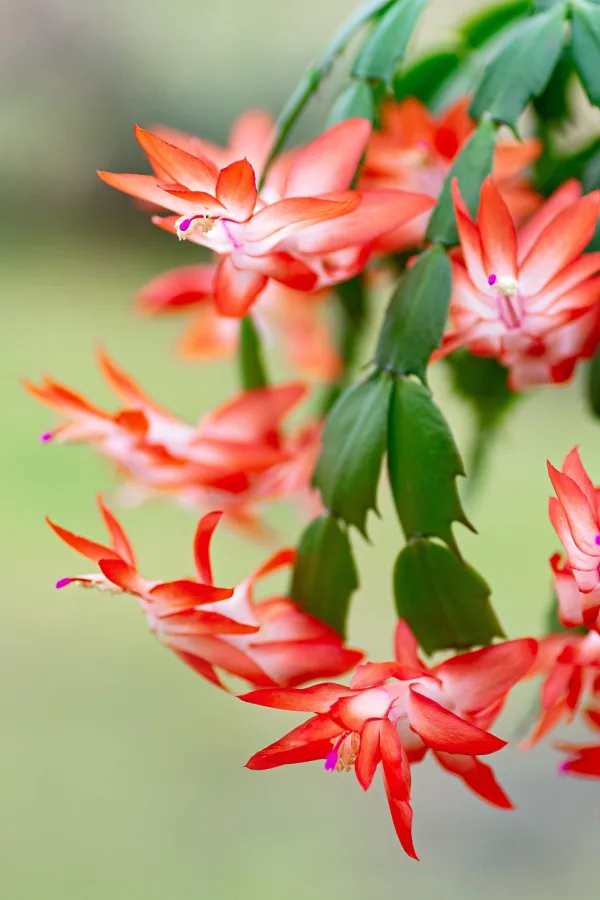
The good news? Keeping your Christmas cactus happy doesn’t have to be difficult or time consuming. In fact, as it turns out, with just a few simple tips and tricks, you can keep your cactus healthy all year round. And even more – have it blooming bigger and brighter than ever right on time every holiday season!
How To Care For A Christmas Cactus – While It’s Blooming, And After!
Christmas Cactus Basics
Although a Christmas cactus will grow in just about any traditional potting soil medium, a potting mix that is made specifically made for succulents works best. The most important part is that the soil drains well. (Affiliate Product Link: Espoma Organic Succulent Potting Soil Mix)
In addition to having well draining soil, always make sure your container features several draining holes to allow excess moisture to drain out. Last but not least, where you place your cactus will make a huge difference in its performance. Both for when its blooming – and when its not!
For best results, keep your Christmas cactus in a location where it will receive indirect sunlight. Avoid direct sunlight. Direct sun, and especially direct sun through a window can burn the foliage. Also, always make sure to avoid locations with fluctuating temperatures or drafts while indoors.
Getting Your Christmas Cactus To Bloom – How To Care For A Christmas Cactus
If you purchased your cactus this year, chances are the grower already prepared it for blooming. In fact, most are already blooming big right in the stores. If that is the case, by simply keeping it in a good location and watering it properly, it should bloom well this year without worry.
Watering
Unlike most cacti plants, a Christmas caucus will need to be watered a bit more often. Only water when the top ⅓ of the soil is dry. Poke your finger into the soil a few inches down. If it is dry to the touch, water thoroughly. Allow the excess water to drain out of the container completely.
You will likely only need to water once every week or so. Check your plant more often when the plant is actively flowering. Christmas cactus plants also enjoy humid locations, so placing your planter on a tray of water and rocks may be beneficial.
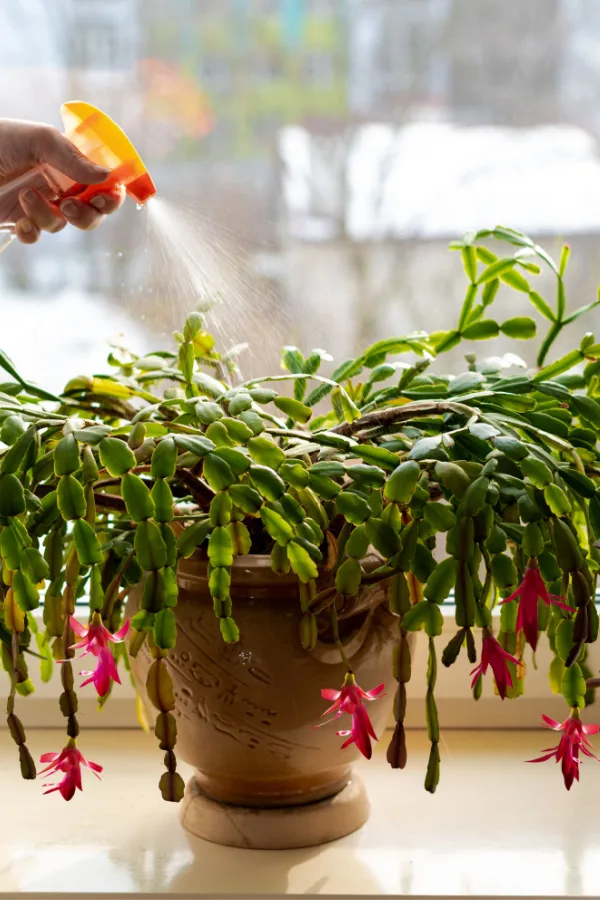
To keep those blooms lasting longer than ever, misting your plant every three to five days will do wonders while it is blooming. It keeps the leaves and blooms hydrated without worrying about overly wet soil.
One thing you won’t want to do to any Christmas cactus while it’s blooming is feed it. Fertilizing the plant while it’s flowering will actually shorten the blooming period, causing the plant to instead grow foliage and shed its blooms to do so.
Getting An Existing Cactus To Bloom – How To Care For A Christmas Cactus
If you are growing a cactus from last year or before, there are a few secrets to get it to bloom right during the holidays.
In order to have better success getting your Christmas cactus to bloom in time for the holidays, place your cactus in a cool location about 10 weeks before Christmas. Keep the temperatures between 50-55º Fahrenheit for best results.

In addition, make sure the plant gets 14+ hours of complete darkness during this time. You may need to cover the plant if this cannot be achieved. Indirect sunlight is fine during the day. Water as usual during this time.
A couple of weeks before Christmas, bring the cactus into a location that has daytime temperatures around 65-70º Fahrenheit and night time temperatures about 5º lower. You will start to see buds forming at the end of the stems. The blooms should start to open just in time for the holidays!
Christmas cacti actively bloom for a 4 to 6 week period. Each of the individual blooms will stay open for around a week. Again, avoid fertilizing while the plant blooms to get the most flower power possible.
Long-Term Care – How To Care For A Christmas Cactus
During the cooler fall and winter months, the Christmas cactus should be kept indoors where it can get plenty of indirect light.
Once spring and summer months arrive, you can keep it in place, or choose to move the cactus outdoors to a shady location such as a back porch or patio. It actually makes for a beautiful plant to decorate covered porches and patios.
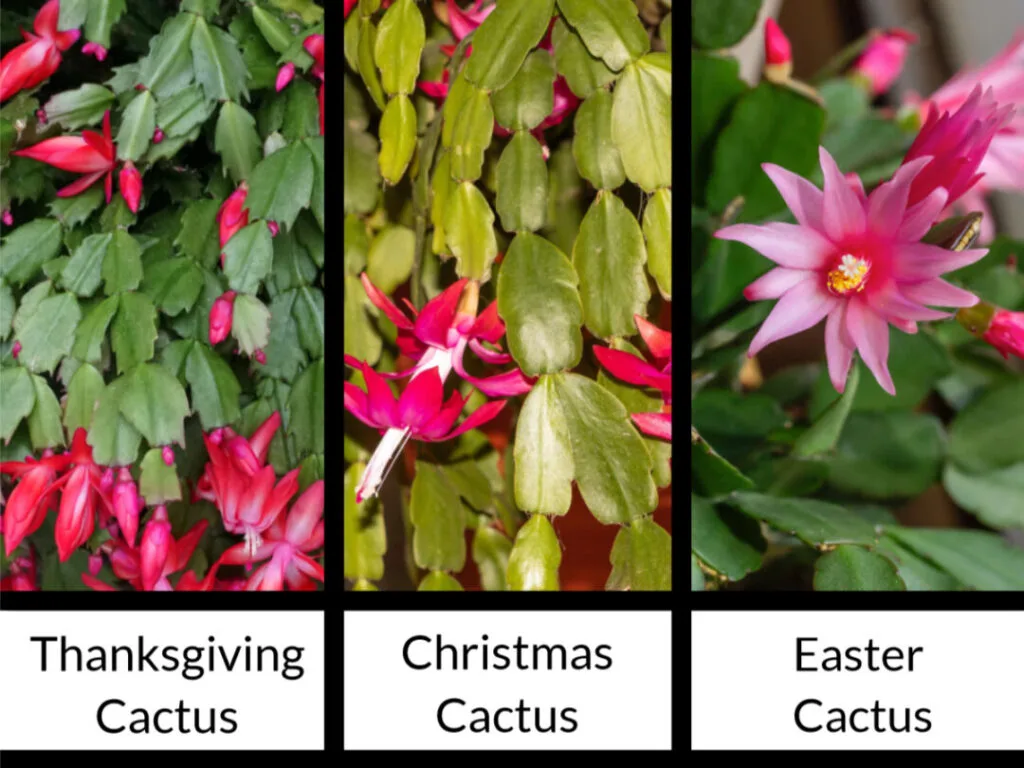
Just take care that it doesn’t get direct sunlight. In addition, never leave the plant outside below 50º Fahrenheit. This is a warmth-loving tropical plant that can easily freeze or damage with cold temperatures.
A Christmas cactus benefits from an occasional dose of fertilizer during the spring and summer months. Choose a liquid, all-purpose indoor fertilizer and not one made specifically for cactus plants or succulents. Fertilize once a month, but make sure to stop in the fall before blooming occurs.
Deadheading & Pruning – How To Care For A Christmas Cactus
As the blooms start to die off, make sure to deadhead spent blooms. Once the Christmas cactus is completely done blooming, it is time to prune the plant. Simply cut the stems between segments with a sharp pruner or knife.
Only remove up to ⅓ of the plant each year. Each place where you cut will allow the plant to branch out, resulting in additional bloom locations the following year.
You should only need to repot your Christmas cactus every few years. These cacti actually prefer a more root-bound structure. Only repot the plants once they are completely done blooming (in the early spring or summer). Choose a new container that is only a few inches larger than the one it was previously in.
Propagating
Those cut pieces of stem you got from pruning can be used to create brand-new Christmas cacti plants. Place the cut pieces in a small container filled with the same type of potting mix you originally used. Keep the soil moist but not saturated.
After a few weeks, you should start to see new root growth. Once you see the root growth, go back to allowing the soil to dry in between watering. Don’t repot the new plant until it has sufficient root growth and has started to show signs of new foliage (usually after at least 10 weeks or so).
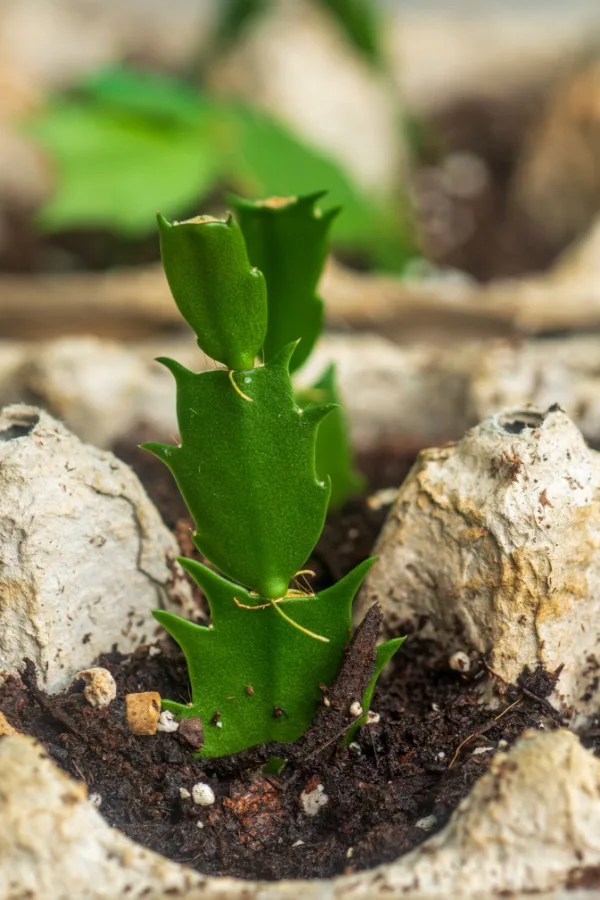
Dropped Blooms – How To Care For A Christmas Cactus
A Christmas cactus can easily drop buds or blooms if it is has too much stress. A lack of watering can cause blooms to fall off if the plant dries out out too much. In addition, fluctuating temperatures or drafts as well as changes in lighting can also cause the plant to drop blooms.
The good news is that even if the Christmas cactus drops buds this growing season, it should still produce new buds the following year.
With just a little bit of simple care and maintenance, you can enjoy the beauty of a blooming Christmas cactus for many, many years to come! If you like growing indoors, be sure to check out our article “How To Grow Ginger Indoors” and enjoy fresh ginger all year long!
Follow Our Facebook Page For Even More Great Tips! Simple Garden Life Facebook Page
Simple Garden Life is a website dedicated to keeping gardening fun, simple and enjoyable! We publish two new articles each week along with a new garden podcast episode every two weeks. This article may contain affiliate links.
